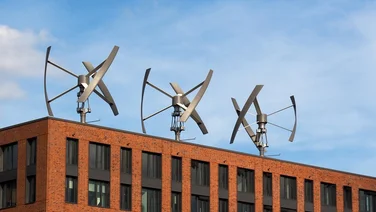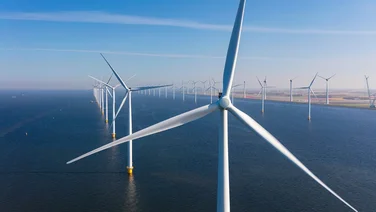- There are currently just 15 hydrogen fuel stations across the UK
- Hydrogen-powered cars produce zero emissions whilst running
- Only two fully hydrogen cars are available to purchase in 2024
Traditional vehicles, using either petrol or diesel, contribute to almost a quarter of the UK’s total emissions. We need to move away from these polluting machines rapidly if we want to reach net zero emissions by 2050.
Electric cars are one solution, and are likely to be the one most people have heard about, but what about hydrogen-powered cars?
If the hydrogen is produced in a sustainable way, these vehicles release zero emissions and could be a better alternative to powering cars using big, lithium batteries.
In this article, we’ll explore whether hydrogen-powered cars are actually the future of transportation, what barriers there are to them in the UK, and when they’ll be widely available.

Why do we need to replace petrol and diesel cars?
Petrol and diesel cars account for almost a quarter of all carbon dioxide emissions in the UK each year, according to government figures.
They also rely on fossil fuels, which are finite resources that we cannot rely on forever. In fact, experts estimate that, if we keep burning fossil fuels at our current rate, the world’s fossil fuel sources will be depleted by as soon as 2060.
Replacing petrol and diesel cars would be a big step towards the government’s 2050 net zero goal, and it’d help mitigate the effects of climate change.
As we’ve seen throughout the past few years, climate change is speeding up. Despite this, sales of electric cars have slowed in recent years, as highlighted in the 2024 National Home Energy Survey, which showed that only 19% plan to purchase an electric vehicle in the next 12 months.
Another alternative to petrol and diesel is hydrogen-powered cars. These vehicles use fuel-cell batteries, which don’t require lithium to make and have a much more impressive average range — typically 400 miles or more.
On top of this, they can be refuelled almost as fast as petrol or diesel cars too, which has traditionally been one of the major downsides of electric cars (although this is continuing to improve).
So why haven’t hydrogen cars taken off in the same way electric cars have?

Do hydrogen-powered cars exist?
There are currently just two hydrogen cars available to purchase — the Toyota Mirai and Hyundai Nexo. They’re not cheap either, with the ‘more affordable’ Mirai setting you back £65,000, and the Nexo costing an eye-watering £68,000.
And even if you did purchase either of the available models, you’ll struggle to refuel them because there are only 15 compatible hydrogen stations in the UK.
How do hydrogen-powered cars work?
Hydrogen-powered cars run on electricity, just like ordinary electric cars, but the way they generate power is different.
Instead of charging a lithium-ion battery from an external source, such as from an EV charging station or a solar panel system, hydrogen cars use fuel cells to produce electricity.
A chemical reaction takes place within the fuel cell, using hydrogen to create an electric current, which then powers the car’s motors and propels the vehicle.
The best part is, this process produces no emissions whatsoever, and the only waste emitted from the exhaust pipe is water.
German car manufacturer BMW put this to the test in the very early days of hydrogen cars. Michael Meurer, head of the hydrogen project infrastructure, drank a glass of water produced by the exhaust pipe of the BMW Hydrogen 7 prototype.
What are the barriers to hydrogen-powered cars in the UK?
Despite their advantages over petrol, diesel, and even electric cars, hydrogen-powered cars face many barriers to becoming popular in the UK.
These include:
Hydrogen production
The UK currently produces hydrogen in very small quantities — certainly nowhere near enough to fuel masses of hydrogen-powered cars.
Hydrogen can also be used to generate electricity in power plants, but right now, the UK produces less than 5 (MW) of energy using low-carbon hydrogen. In 2021 the UK’s total energy consumption was at 294.4 tWh, or 294,600,000 megawatt hours (mWh).
So in order for hydrogen-powered cars to make an impact on the automotive industry, the UK would need to first begin producing hydrogen in far larger quantities — specifically, green hydrogen.
This type of hydrogen is produced using electrolysis — the process of using electricity to split water into hydrogen and oxygen — instead of from gas or methane, which is classified as grey hydrogen.
The difference between green and grey hydrogen is that green doesn’t release emissions (if the facility is using renewable energy to power the process of electrolysis), and grey does because it comes from fossil fuels.
Cost
If hydrogen-powered cars are going to be considered an eco-friendly alternative to petrol and diesel cars, the fuel used must be green hydrogen. But one of the drawbacks of this is cost.
As it stands, green hydrogen is considerably more expensive to produce than grey hydrogen — it’s roughly £3–£5 to produce a single kilogram of green hydrogen, versus just £1.27 for grey hydrogen.
Scale this up to the amount needed to power a hydrogen-car revolution, and the cost barrier becomes clear. To compare, refining a gallon of petrol, which weighs 3.79kg, costs just 32p.
Infrastructure
There simply isn’t a robust infrastructure available for hydrogen-powered vehicles yet, with just 15 stations currently available in the UK.
Hydrogen stations need to be purpose-built too — unlike EV charging stations, which can be easily added to existing petrol stations or to a home. It costs roughly £2m to build a single hydrogen station, and the UK government estimates that we’d need 1,000 stations across UK roads to make a viable network for hydrogen cars.
That’s at least £2bn on infrastructure. And even if the government started building them in rapid numbers, it’d take years to get to a point where owning a hydrogen car was convenient.
Right now, the existing 15 hydrogen stations are located on industrial estates, at council premises, or next to research institutes — hardly ideal locations for general use by the public.
When will hydrogen-powered cars be commercially available?
Hydrogen-powered cars are already commercially available, just in very small quantities. The aforementioned Toyota Mirai and Hyundai Nexo haven’t even broken 200 models sold in the UK yet, despite being available since 2015.
As of 2023, you’ll find just 115 Mirais on UK roads, and 29 Nexos scrambling between the prohibitively limited number of hydrogen fuelling stations.
When will the UK fully adopt hydrogen-powered cars?
There is no concrete date for when the UK will fully adopt hydrogen-powered cars because so much rides on the UK fixing its currently poor hydrogen infrastructure.
The government’s hydrogen strategy doesn’t offer much encouragement either, as it doesn’t foresee much take-up of hydrogen-powered cars by motorists.
However, the strategy does suggest that there’ll be a wider spread of public transportation using hydrogen by 2030:
“By 2030, we envisage hydrogen to be in use across a range of transport modes, including HGVs, buses, and rail, along with early stage uses in commercial shipping and aviation. Our analysis shows there could be up to 6TWh demand for low-carbon hydrogen from transport in 2030.”
Certain locations, such as London, do have some hydrogen-powered public transport, but it’s limited. The capital’s iconic red bus fleet has just 22 hydrogen fuel cell buses operating out of a total fleet of 8,795 — compared to 785 fully electric buses, and 3,854 hybrid ones (electric and petrol).
Have any other countries started using hydrogen-powered cars?
China leads the world in hydrogen-powered cars and infrastructure, with 250 viable hydrogen stations. The country has also set the ambitious target of having over one million hydrogen cars on its roads by 2030.
Japan is a close second, with 161 hydrogen stations. This isn’t surprising when you consider that Japanese car manufacturers Toyota and Honda are among some of the only automakers in the world making hydrogen-powered cars.
It’s a similar story for South Korea, which has 141 hydrogen stations installed. It’s also home to Hyundai — the manufacturer of the Nexo, which is one of the two hydrogen cars available to buy in the UK.
Summary
- Hydrogen-powered cars have clear benefits over both electric and traditional petrol/diesel cars, but the high costs of producing hydrogen fuel, and poor infrastructure, are barriers
- It’ll take years to get the UK to a point where hydrogen cars are a viable option. In the meantime, it looks like electric cars will continue to be the best option for drivers wanting to shift away from fossil fuels
- There are currently just two hydrogen cars available to purchase — the Toyota Mirai and Hyundai Nexo
- China leads the world in hydrogen-powered cars and infrastructure, with 250 viable hydrogen stations
- Japan is a close second, with 161 hydrogen stations
- There is no concrete date for when the UK will fully adopt hydrogen-powered cars because so much rides on the UK fixing its currently poor hydrogen infrastructure







